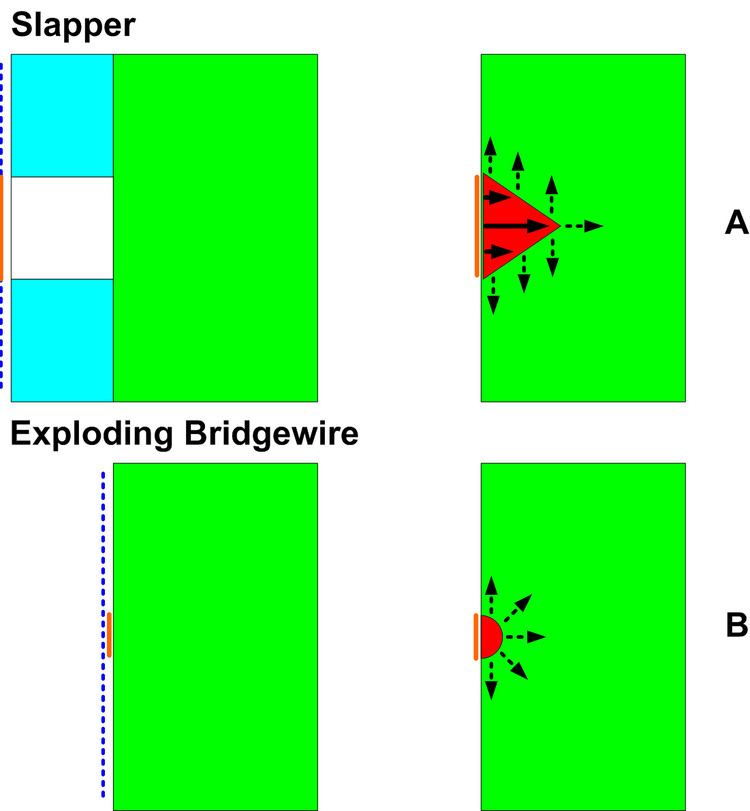 | ||
A slapper detonator, also called exploding foil initiator (EFI), is a relatively recent kind of a detonator developed in Lawrence Livermore National Laboratory. It is an improvement of the earlier exploding-bridgewire detonator; instead of directly coupling the shock wave from the exploding wire, the expanding plasma from an explosion of a metal foil drives another thin plastic or metal foil called a "flyer" or a "slapper" across a gap, and its high-velocity impact on the explosive (for example, PETN or hexanitrostilbene) then delivers the energy and shock needed to initiate a detonation. Normally all the slapper's kinetic energy is supplied only by the heating (and hence expansion) of the plasma (the former foil) by the current passing through it, though constructions with a "back strap" to further drive the plasma forward by magnetic field exist too. This assembly is quite efficient; up to 30% of the electrical energy can be converted to the slapper's kinetic energy.
The initial explosion is usually caused by explosive vaporization of a thin metal wire or strip, by driving several thousand amperes of electric current through it, usually from a capacitor charged to several thousand volts. The switching may be done by a spark gap or a krytron.
Usually the construction consists of an explosive booster pellet, against which a disk with a hole in the center is set. Over the other side of the disk, there is a layer of an insulating film, for example, Kapton or PET film, with a thin strip of metal (typically aluminum or gold) foil deposited on its outer side. A narrowed section of the metal then explosively vaporizes when a current pulse passes through it, which shears the mylar foil and the plasma ball pushes it through the hole, accelerating it to very high speed. The impact then detonates the explosive pellet.
Advantages over explosive-bridgewire detonators include:
In a variant called laser detonator the vaporization can be caused by a high-power laser pulse delivered over-the-air or coupled by an optical fiber; this is reportedly used as a safety detonator in some mining operations and quarries. Typically a 1-watt solid-state laser is used.
The slapper detonators are frequently used in modern weapon designs and aerospace technology.
For the description of the required firing system, see Firing system for exploding-bridgewire detonator.
